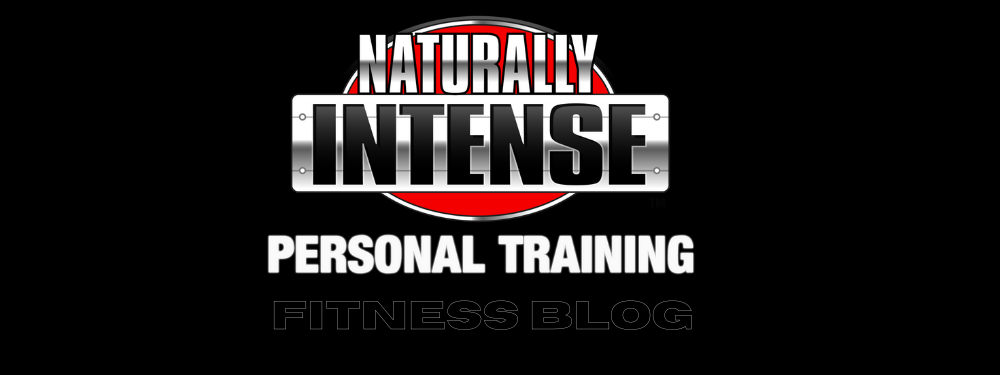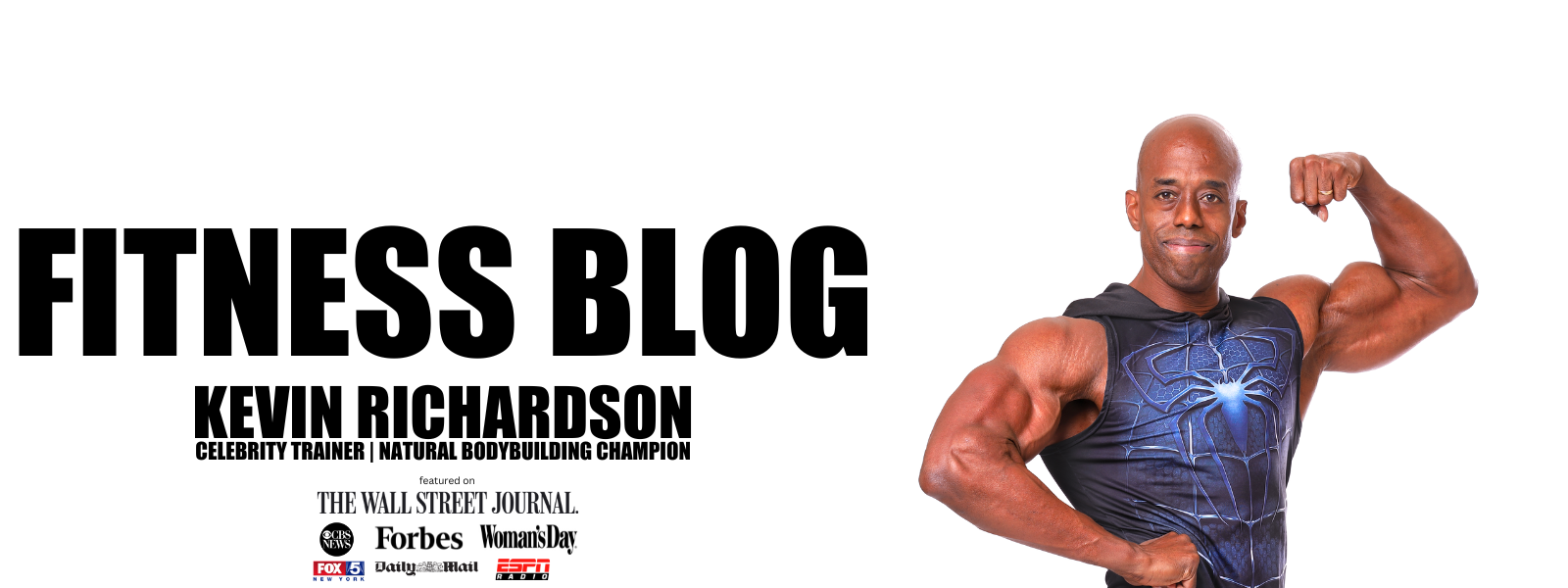Partial Reps (Half Reps) vs Full Range Of Motion- What Works Best
One of the oldest tenets of weight training is the overriding importance of full range of motion (ROM) exercise for optimal muscular and strength development. Counter to this conventional approach, many bodybuilders, power lifters and athletes of numerous disciplines have successfully included partial range of motion repetition training protocols for decades with exceptional results, but mention anything other than executing an exercise through a complete range and tempers immediately flare. The idea of full range of motion training is ingrained in the formative training protocols of most fitness professionals and few are able to think outside of that sometimes narrow and restrictive box. Unfortunately, the hubris of an emotional response to a new and poorly understood training technique can often lead us away from a real and informed determination as to whether a particular training regime has any intrinsic value. The use of brief, low volume high intensity training as a viable, (and some might say superior), method of increasing muscle mass, endurance and reducing body fat[1,2,3,4] is a prime example. In this article we will take a hard look at one of the training methods that in many ways goes against the grain and explore whether there is any real merit to the use of partial repetition training for increasing strength and muscle mass. Full range of motion versus half reps as partial repetitions are commonly called is a controversial subject, to say the very least, but after reviewing the research you may have a different point of view as to its practicality and potential usefulness in your own training program. Thanks as always for reading my work and do feel free to forward this article to someone you think would benefit from reading it.
With partial range of motion movements you work just above the sticking point which allows you to use more weight and overload the muscles more.
Partial Range Of Motion Repetitions (Half Reps)- What Are They?
A partial repetition (or rep- which is the wording that I will use mostly throughout the article) is defined as a movement that is executed within a restricted portion of a lift. [5] In the cases of partial rep training, the range of motion focuses on the upper range or completion phase of the repetition. For example- in a squat a partial rep would be a half or quarter squat where you do not descend to the parallel plane or below, while in a bench press a partial rep would consist of a limited range of motion in the final 2-5 inches of the lift right before full extension of the elbows.[5.] Muscular strength varies throughout the full range of motion of any given joint due to muscle length-tension relationships, muscular activation and overall muscle mass.[6,7,8,9,10,11] If you were to plot on a graph the variations in strength during any weight bearing exercise you would see that the upper range corresponds to the area of the highest force output. Partial reps are an advanced mode of training used by numerous athletes in various sports where the idea is to train in the range of motion where there is maximal force production. One application of this form of training is to overload the musculoskeletal system with extremely heavy loads in the area of range of motion where maximal force is produced. Given the smaller range which describes the range of motion where your muscular force is greatest, it is possible to lift supramaximal loads- which are weights greater than 100% of your one repetition maximum (1-RM) [12] Several studies assert that this form of training is in some ways superior to full range of motion training for increasing muscle mass and overall as it allows for the use of much heavier weights. [13, 14]
The Argument For The Use Of Partial Reps
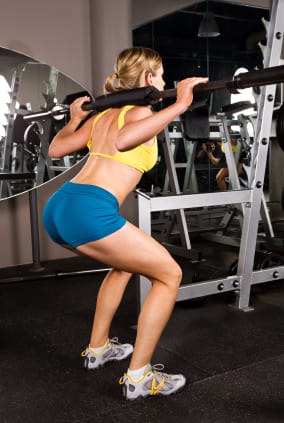
Partial reps confer a substantial mechanical advantage as you are able to handle considerably heavier weights. Training with heavier weights through your strongest range of motion means that there will be a far greater degree of overload experienced by the muscles being exercised. Overload is an important variable in terms of increasing muscle strength and size. Without significant overload, there is no reason for our bodies to trigger the adaptation response that makes our muscles bigger and stronger. (Read my article on How Muscles Get Bigger & Stronger for more information on the importance of overload and the adaptation response.) That being said, the ability over time to move heavier weight will trigger the adaptation response and muscles will get larger and stronger as a result. Ligaments and tendons will also become stronger, further increasing the potential for increased strength.[23] Another important argument for the use of partial reps is its relevance in what is known as the carryover effect. Execution of full range of motion on almost all conventional weight lifting exercises does not resemble everyday activities or those relevant to athletic and sporting activities. Consider the punch of the boxer or the swing of a baseball bat- all movements that are far closer to a partial movement than a full a range of motion exercise that you would ordinarily see in the gym. In everyday activities we usually act with our arms almost fully extended and since partial reps are more specific to these real world activities there should be more of a carryover effect in terms of enhancing performance of these movements.
Partial Reps Are Closer To Real Life Movements Than Full Range Of Motion Reps
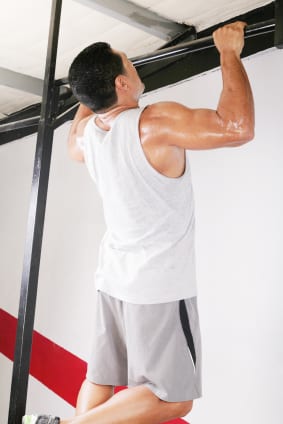
Not only can you use more weight doing partial rep squats, but it also is more similar to most real life athletic type movement than full range squats.
A prevailing theory of sports specificity is that the closer a training protocol resembles an athletic ability, the higher the likelihood that gains from the training will translate into greater athletic performance. [15,24] Consider for example the execution of a half squat versus that of a full squat. Many an old school gym goer might turn their noses up at someone not squatting to parallel or lower- but there is some merit to training in this manner- both for those seeking improved athletic performance and increased strength in a full squat. In a full squat the amount of weight you use will always be limited to how much you can handle through what is referred to as ‘the sticking point’.[15] In a squat this occurs somewhere around the mid to lower range of the exercise (between the joint angles of 95 and 115 degrees approximately), and when performing the exercise it becomes relatively easier once you have ascended past this point. This is because the weight required to bring about overload in the lower range of a squat is not enough to overload the leg muscles in the upper range between the joint angles of 140-180 degrees. In fact, on average most people can lift anywhere in the ballpark of 150% more weight in the upper range of a squat and the argument is that not working with adequate overload in this range you are missing out on realizing your full strength potential.
Partial Reps Confer Athletic Benefits Not Possible With Full Range Of Motion Reps
It’s an argument that is not without some apparent logic as execution of almost all athletic type movements- from jumping to get a basketball, to riding a bicycle occur within a small range of motion as we mentioned previously. Thus it makes sense to train with heavier weights in this range to maximize your athletic performance. A heavy half squat, as maligned as it may be by many gym purists, confers force production and athletic performance benefits that full squats simply cannot replicate and is one of the reasons athletes use partial rep training with supramaximal loads to improve their performance. This form of training was extremely popular in the former Soviet Bloc with many athletes in the West adopting these principles after seeing how effective they were in helping athletes from behind the Iron Curtain excel in the Olympic Games. [24]
Can Partial Reps Increase Overall Strength
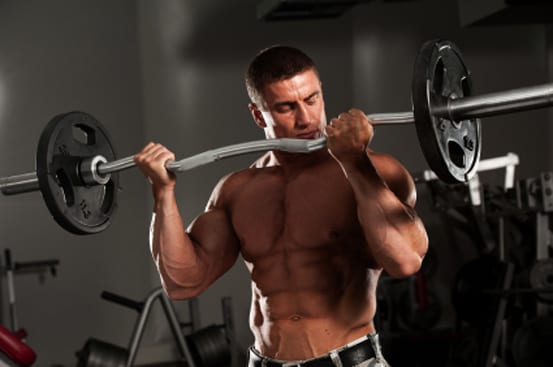
While we can say with some certainty that partial reps can allow for heavier weights in small ranges of motion, the question remains whether this confers increases in strength throughout the full range of joint movement. Interestingly enough, physical therapy studies and interventions show that they do indeed carry over. The majority of studies using partial range of motion training were performed on clinical populations in which the patients had limited range of motion to begin with. These studies show without question that partial range of motion training increased isometric strength within the specifically trained range of motion of the exercise and throughout the full range as well. [16,17] Other studies using isometric training have demonstrated that movements executed within a specific joint angle can result in a ‘spillover’ of strength of plus or minus twenty degrees from the trained joint angle.[9,18,19] Neural adaptation could play a part in such spillover as the muscles learn to recruit and fire more motor units in response to a new load bearing exercise, especially during the first several weeks. [20]. This could account for some strength transfer although other studies have shown increased strength throughout other ranges after partial repetition isometric training for a period of 16 months. [21]
These studies mostly focused on isometric training in a rehabilitative setting, but in a more gym specific environment several researchers have investigated the influence of partial range repetitions on overall range of motion strength. The findings show that such training protocols do indeed have a positive effect on increasing strength throughout the full range of joint movement on several tested exercises. [16,17,22, 23] One study looked at the differences in strength increases among regular strength trained male volunteers doing full range versus partial range of motion bench presses. Participants were tested their 1 repetition maximum (1-RM) bench press lift and their 5 repetition maximum lift on two separate occasions after training with full range of motion bench presses and then after training with partial range of motion bench presses. The results showed that partial range of motion performance increased significantly for both the 1-RM and the 5-RM while no such improvements were observed for the full range of motion movement. [12] Such results are notable, and researchers were quick to add that these individual who ordinarily trained using full range of motion movements may have experienced improvements due to an increased motor learning response and because they failed to regularly train in the area where maximal force development occurs.[12] By increasing their biomechanical advantage during lifts by simply eliminating the ‘sticking point’ they are able to use much heavier weights than usual.
Partial Rep Training Is As Effective As Full Range Of Motion Training Under Some Conditions
Overload is a key determinant to increases in strength and muscle size and partial reps allow you to use much heavier loads.
A longer duration 10 week bench press study of recreational, drug free weight training men took a look at the results of partial repetition training in a controlled setting where subjects were not allowed to do any weight lifting activities outside of their assigned exercises in the study. Participants were put in three groups- one group doing partial range of motion repetitions only, one group doing full range of motion repetitions only and one group trained using a combination of partial repetitions and full range of motion reps. Training was done twice a week and included basic compound movements for the entire body such as squats, rows, curls, pull-downs, leg curls, calf raises and crunches with the emphasis on bench presses. For bench presses the partial repetition group trained at or above 100% of their 1-RM within the upper portion of the lift just above the sticking point near full extension of the elbows. The full range of motion group started out at 65% of their 1-RM- with all groups performing three sets of 15 repetitions.
At the end of the 10 week program subjects were tested on their one repetition maximum (1-RM) on the bench press through a full range and the findings were not at all what one might expect. Participants in ALL groups experienced significant increases in strength, with those in the full range of motion group experiencing almost identical average increases in their bench press maximum of between 25 and 24.33 pounds.[23] Strength increases in the combination range of motion group however was a bit lower at 16.5 pounds on average. Given the idea that overload is the most important determinant in whether or not muscular adaptation is triggered to increase strength and size- advocates of partial rep training might expect that those doing only partial reps would have the greatest gains in strength, but this was not the case. On the other hand, since those doing partial reps never did a full rep, advocates of full range of motion training might expect them to not be as strong as those doing exercises through the full range- but this was not the case either as gains were about equal either way. Thus partial repetitions were found to be equally as effective as full range of motion training within the parameters of this study. [23]
Partial Rep Training- Aerobic & Fat Burning Benefits

Researchers have found that greater force generated in the upper range of an exercise can make the overall training session more intense and help you get more out of your workouts. Studies of partial repetition barbell curls in the upper range showed that it not only allowed for the production of more force (torque) but also accentuated the cardiovascular response to the exercise as compared to full range of motion curls.[14]Heart rates were higher as was blood lactate, PH levels and perceived degree of exertion among subjects in the study. Researchers theorized that the restricted range of motion allowed for an increase in the speed and rate of motion in the performance of the partial repetition- thus increasing the amount of work performed in a set period of time. The more work you do the greater the training effect and this aspect of partial rep training is one that many schooled in high intensity techniques will immediately recognize. As it goes a long way in bringing about a greater overall conditioning effect. The increased intensity also leads to greater post exercise oxygen consumption (EPOC) as the body has to burn more calories to return to homeostasis.[25] An afterburn effect that has been shown to be an effective method for fat loss, thus those interested in shedding extra pounds may want to integrate some partial rep training into their programs. Such intensity also have an increased cardiovascular benefit and should be of interest to those keen on increasing aerobic fitness as well.[26] Training at high intensities isn’t the only way to increase strength, but i might be one of the most efficient ways to get stronger and tone up in the process.
Partial Reps- When Are They Best Used
Partial repetition training is without question a useful tool in the arsenal of anyone serious about peak performance, increasing strength, lean muscle mass, aerobic capacity and decreasing body fat. Advanced athletes at a sticking point would benefit greatly from a program incorporating partial repetition training, especially when they reach a plateau where little or no progress occurs.[12] Data shows that integrating partial rep training with full range of motion leads to notable increases in strength. Increases that over time should amount to gains in lean muscle mass as well. Many of the studies were considered too short (only 8-10 weeks) to see any measurable increases in muscle mass- but a long term inclusion of this protocol should present some gains in this area.[2,3,9]) On a personal note, I have included partial repetition training as a powerful tool in our Naturally Intense High Intensity Training™, and I can say after 22 years of doing it and teaching it that it does indeed go a long way in increasing intensity, muscle strength and size, especially among advanced athletes. One use that was invaluable to me as a teenager was in the idea of dis-inhibition.We all have built in fail safes that stop us from lifting heavier weights. Far more than simply an unreasonable fear, it is a function of our central nervous system to signal our muscles to shut down when a load placed on our body is too high. It’s a useful mechanism that helps us from injuring ourselves on a regular basis by trying to lift trucks and such, but it can also stop us from training with the weights we should be using if maximum strength is your goal. As a teen, 315 lbs was about the heaviest weight on the planet for me. I couldn’t conceive of anything being heavier for a full squat. So over time my coaches had me do half squat movements with as much as 450 lbs- with the idea of getting me accustomed to the heavier load. Sure enough, it did work and I was able to squat over 405 lbs in a full squat over time. This concept of dis-inhibition is one that is well documented and often used by strength athletes since using heavier weights in smaller ranges of motion does reduce the overly sensitive nature of of our protective mechanisms, thus allowing the individual to get closer to their absolute maximum lifting abilities.[15]
Partial reps can also be used as a tool to increase training intensity by using them at the end of a full range of motion set after reaching or approaching momentary muscular failure. If you are doing barbell curls for example and can only do 10 reps with a given weight- you could do 10 reps and then get another few reps by working in the upper range of the movement as you are mechanically stronger in that range. That way you can significantly overload your muscles and the increase in intensity will help you retain the benefits of the training session longer and help you burn more calories in the process. Using partial reps in this manner also reduces the amount of weight you would ordinarily lift doing straight partial reps as you won’t be in the supramaximal range but will still create a high degree of muscular overload. That way you stay safer by not lifting as heavy a weight but still get the benefit of partial reps training- a technique we regularly employ with Naturally Intense High Intensity Training.
As great as they may be partial reps should not replace full range of motion training completely, as full range of motion movements also have considerable benefits. Increased flexibility naturally occurs over time when training with resistance through a joint’s full range of motion- (think of it as yoga with weights if you may) and training with supramaximal weights consistently means that there will be a greater risk of injury over time. Since muscles don’t have much in the way of opinions but respond best to stimuli that they are unaccustomed to- it makes sense to judiciously add some partial rep training to your program and keep varying it with many other training principles as well. Partial repetition training is another tool like many others that you can use to keep your muscles challenged and constantly needing to get bigger and stronger to adapt to your ever changing routine.
High Intensity Bodyweight Training: Ballistic Pushups & Dips!
This was a tough one!
Starts out with ballistic push ups (like clap pushups but without the clap as my wrist is still not 100%) nonstop for 20 reps, then all out on dips for 10 reps.
To say it was painful would be an understatement, but you just have to push through and keep on going.
Still training, hope you are too and as always, Excelsior!!! #naturallyintense
#hometraining #homeworkout #homeworkout #highintensitytraining #naturalbodybuilder #naturalbodybuilding #fitover40 #naturalbodybuildingvideos #chestday #chesttraining #naturalbodybuildingtips #pushups #dips #bodyweighttraining #highintensitytrainingtips #drugfreebodybuilding #calesthenics
Kevin's Unconventional Biceps Training- 3-6 Minutes a Week!
In this video I go over my biceps training using the Naturally Intense High Intensity Training protocols that helped me go from having arms measuring 11.5 to 12 inches to 18 inches drug free!
It's an unconventional approach for certain, but it's one that's helped my arms grow and the hundreds of men and women I have trained over the past 30 plus years.
Now, my success isn't due to being genetically gifted, as it took me the better part of 11 years to get my arms up to those measurements.
Which is significant as it works and been been proven time and time again to work for the average man or woman trying to grow their arms without drugs.
It's my hope that these high intensity training protocols can help you as much as they helped me!
Click on my bio link to see the full video on my YouTube channel and thanks as always for taking the time to look at my work!!! Excelsior!!! #naturallyintense
#highintensitytraining #naturalbodybuilder #naturalbodybuilding #fitover40 #naturalbodybuildingvideos #armworkout #bicepsworkout #naturalbodybuildingtips #biceps #armtraining #highintensitytrainingtips #drugfreebodybuilding #barbellcurls
At the Lancaster Classic Day 2 Elimination Rounds Against European Champion, and World Record Holder Leo Pettersen @leo_barebow_archer
I don't talk much about it but I'm also a competitive barebow archer (surprise!) and last Saturday I had the honor of making it to Day 2 at the Lancaster Archery Classic in the Barebow Division, as I made the top 64 out of 267 competitors and had a chance to shoot with some of the greatest barebow shooters on the planet!
I didn't make it past Leo, but it was a real rush to be there and a huge thanks to my coach, Joe MyGlyn @prolinearchery for helping me get there.
Thanks as well to my good friend @sean_chan33 for all of his help from the very start, to my line buddy Aaron Shea for taking the shot and showing up to support!
My thanks as well to rob_kaufhold for putting on and promoting one of the best archery tournaments on earth!
Thanks also to to everyone who took the time to send a supporting word and I am looking forward to next year!!! #naturallyintense #barebow
#lancasterclassic #lancasterarcheryclassic2024 #lancasterarchery #archery #fitover40 #barebowrecurve #targetarchery
Dumbo, Brooklyn circa 2004
This shot was taken as part of the promotion for my Naturally Intense DVD and was about a year after my last bodybuilding competition.
It was a grueling photoshoot.
We started at about 10 am and finished around 4pm and I was completely spent, but the more we shot the sharper I looked, so we kept on going.
It's nice to look back from time to time and as tired as I was, we all had a blast!
My thanks to @stephanie_corne_artwork, @https://pulse.ly/itgnag2dec and @ftaz1 for taking the shots!!!
Thanks for watching and as always, Excelsior!!! #naturallyintense
#naturalbodybuilder #naturalbodybuilding #throwback #fifthavenuegym #5thavenuegym #drugfreebodybuilding #naturalbodybuildinglifestyle #gymlife #gymmotivation #naturalbodybuildingmotivation #bodybuilding #blackandwhite #instablackandwhite #bnw
Can You Build An Impressive Physique Training Only At Home?
Absolutely!
I stopped training in commercial gyms as of March 2020 and have been training at home ever since.
Initially I was admittedly worried that I might lose some of my gains or not make as much progress, but that certainly wasn't the case.
I've consistently continued to improve with my high intensity workouts and muscles have no idea where they are training.
As long as the criteria of adequate intensity and overload are met, there will be an adaptive response and your muscles will get bigger and stronger.
So don't worry at all about where you train, focus instead of what will be the best way for you to always be training!
Thanks for watching and as always, Excelsior!!! #naturallyintense
Kevin's Three Day Training Spilt!
For the past 33 years I have trained three times a week with Naturally Intense High Intensity Training workouts lasting 10, 15 to 20 minutes max.
It's a training split tried and testes not only in it's helping me realize my goal of becoming a successful natural bodybuilder, but it's also helped hundreds of men and women over the past three decades.
I have tested just about every possible training split imaginable and for this particular style of high intensity training, this particular grouping consistently yields fantastic results.
I hope it helps you as much as it's helped me over the years and thanks so much for taking the time to look at my work.
Keep training hard and Excelsior!!! #naturallyintense
Excelsior!!! #naturallyintense
#trainingsplit #3daytrainingsplit #threedaytrainingsplit #naturalbodybuilding #naturalbodybuilder #naturalbodybuildingvideo #naturalbodybuildingmotivation #naturalbodybuildingtips #drugfreebodybuilding #bodybuilding #highintensitytraining #highintensitytrainingtips
405 Stiff Leg Deadlift for 7 Reps! High Intensity Training.
First leg workout of the year and already pushing it!
I haven't done a stiff leg deadlift over 315lbs for about 3 years at this point, and I did my last set with 315lbs and comfortably got to 10 reps and decided I had far too much gas left in the tank and that I should go up in weight.
So I did.
I figured I might get a solid 6 reps in, but I made it to 7 and I think I could have gone on to get a full 10 reps BUT that's when good judgement prevailed.
As a bodybuilder having not trained this heavy for so many years, the shock of this much weight would be more than enough to stimulate muscle growth, and doing more reps wouldn't yield any greater returns, only increase the likelihood of injury.
It's not about the numbers, it's about training to a point where you achieve your goal, and it's important to have a goal in mind as a bodybuilder based on increasing muscle mass rather than hitting a particular number.
Besides, if in my 20's I never did more than 405lbs on a stiff leg deadlift, it doesn't make any sense going heavier than when I am almost 50!
Could I deadlift more at this point?
Absolutely but just because you can doesn't mean you should!
So keep those weights in a good working range, keep it safe and as always Excelsior!!! #naturallyintense
#hometraining #homeworkout #homeworkout #roguerack #highintensitytraining #naturalbodybuilder #naturalbodybuilding #fitover40 #naturalbodybuildingvideos #backworkout #naturalbodybuildingtips #backtraining #highintensitytrainingtips #drugfreebodybuilding #fitoverforty #deadlift
Turning 50 in a few months...
Not much of a big deal for me as I still feel pretty much the same but I hope that my example helps show what can be done with a lifetime commitment to eating well and training consistently!
Thanks for coming along on the journey and as always, Excelsior!!! #naturallyintense
#naturalbodybuilder #naturalbodybuilding #healthylifestyle #fitover40 #drugfreebodybuilding #naturalbodybuildingmotivation #natty #fitness
Please note that all material is copyrighted and DMCA Protected and can be reprinted only with the expressed authorization of the author.
Featured everywhere from the Wall Street Journal to CBS News, Kevin Richardson’s Naturally Intense High Intensity Training have helped hundreds lose weight and transform their bodies with his 10 Minute Workouts. One of the top natural bodybuilders of his time, Kevin is also the international fitness consultant for UNICEF and one of the best after personal trainers in New York City.
References for Partial Reps vs Full Range Of Motion
- Impact of exercise intensity on body fatness and skeletal muscle metabolism. Tremblay, A. et al., Physical Activities Sciences Laboratory, Laval University, Quebec, Canada Metabolism. 1994
- Bahr R. “Excess postexercise oxygen consumption–magnitude, mechanisms and practical implications”. Acta Physiologica Scandinavica. Supplementum. 1992
- Bahr R, Høstmark AT, Newsholme EA, Grønnerød O, Sejersted OM. “Effect of exercise on recovery changes in plasma levels of FFA, glycerol, glucose and catecholamines”. Acta Physiologica Scandinavica 1991
- Bielinski R, Schutz Y, Jéquier E.“Energy metabolism during the postexercise recovery in man”. The American Journal of Clinical Nutrition. 1985
- Massey D. An analysis of full range versus partial range of motion training in the development of strength. Giebing J, Frohich M. Current Results Of Strength Training Research. A multi-perspective approach. Vol 1.
- Capmney HK, Wehr RW. Significance of strength variation through a range of joint motion. Phys. Ther. 1965.
- Clarke HH, Elkins EC, Martin GM, Wakim KG. Relationship between body position and the application of muscle power to movements of the joints. Arch. Phys. Med. Rehab. 1950.
- Tsunoda N, O’Hagan F, Sale DG, MacDougall JD. Elbow flexion strength curves in untrained men and women and male bodybuilders. Eur. J. Appl. Physiol. 1993.
- Thepaut-Mathie , Vanhoecke CJ, Maton B. Myoelectrical and mechanical changes linked to length specificity during isometric training. J. Appl. Physiol. 1988
- Weir JP, Wagner LL, Housh JJ. The effect of rest interval length on repeated maximal bench presses. J. Strength Cond. Res. 1994.
- Kulig K, Andrews JG, Hay JG. Human strength curves. Exerc. Sports Sci. 1984.
- Mookerjee S, Ratamess N. Comparison of strength differences and joint action durations between full and partial range of motion bench press exercise. Journal of Strength and Conditioning Research 1999
- Graves J, Pollack ML, Jones AE, Colvin AB, Leggett SH. Specificity of limited range of motion variable resistance training. Medicine & Science in Sports & Exercise 1989
- Sullivan J, Knowlton R, Devita P, Brown D. Cardiovascular response to restricted range of motion resistance exercise. Journal of Strength & Conditioning 1996
- Wilson G. Strength and power in sports. Bloomfield J, Ackland T, Elliot B. (Editors) Applied anatomy and biomechanics in sports. Boston Blackwell Scientific Publications.
- Graves JE, Pollock ML, Jones AE, Colvin AB, Leggett SH. Specificity of limited range of motion variable resistance training. Med. Sci. Sports Exerc. 1989.
- Graves JE, Pollock ML, Leggett SH, Carpenter DM, Fix CK, Fulton MN. Limited range-of-motion lumbar extension strength training. Med. Sci. Sports Exerc. 1992.
- Knapik JJ, Mawdsley RH, Ramos NV. Angular specificity and test mode specificity of isometric and isokinetic strength training. J. Orthop. Sports Phys. Ther. 1983.
- Knapik JJ, Wright JE, Mawdsley RH, Braun J. Isometric, isotonic, and isokinetic torque variations in four muscle groups through a range of joint motion. Phys. Ther. 1983.
- Marks, R. The Effects of 16 Months of Angle-Specific Isometric Strengthening Exercises in Midrange on Torque of the Knee Extensor Muscles in Osteoarthritis of the Knee: A Case Study. Journal of Orthopaedic and Sports Physical Therapy. 1994
- Sale, D. G. Neural Adaptation to Strength Training. In P. V. Komi (Ed.),Strength and Power in Sport. Oxford: Blackwell Scientific Publications 1991.
- Lander JE, Bates BT, Sawhill JA, Hamill J. A comparison between free-weight and isokinetic bench pressing. Med Sci Sports Exerc. 1985
- Massey CD, Vincent J, Maneval M, Moore M, Johnson JT. An analysis of full range of motion vs. partial range of motion training in the development of strength in untrained men. J Strength Cond Res. 2004
- Zatsiorsky V. Science and Practice of Strength Training. Champaign, IL: Human Kinetics, 1995
- Børsheim E, Bahr R. Effect of exercise intensity, duration and mode on post-exercise oxygen consumption. Sports Med. 2003
- Tomlin DL, Wenger HA. The relationship between aerobic fitness and recovery from high intensity intermittent exercise. Sports Med. 2001.
